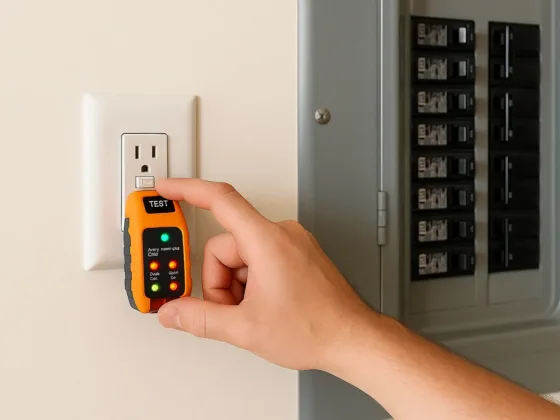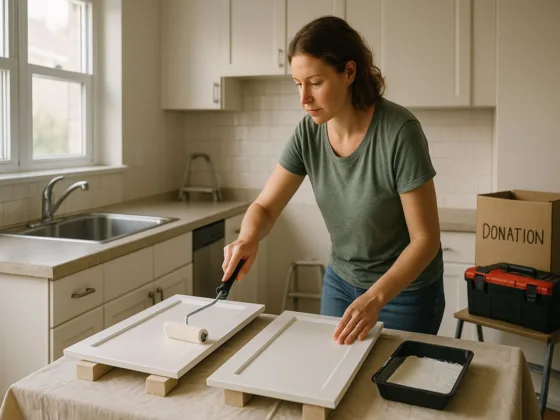Table of Contents Show
You can plan a move on paper in an hour. The test arrives on the stairs with a sofa that will not turn, a bookcase that sags when lifted, and a box you forgot was full of dishes. There are many things you need to do when moving, but the hardest part is the time-boxed, high-risk work of getting everything out safely and into the next place without injury, damage, or surprise fees. This guide explains what pros actually do well, when DIY still makes sense, how to verify a mover, what to put in writing, and the smartest times to book.
17 Real-World Benefits of Hiring Professional Movers + A DIY Decision Framework
Quick summary
- Pros reduce risk and compress timelines through process, training, and the right gear.
- Verify a mover’s legal status, insurance, and complaint history before you book.
- Understand your liability choice, because it changes both price and protection.
- Weekdays and mid-month slots are easier to secure and often friendlier on price.
- DIY can win for small, simple local moves with flexible timing and reliable help.
1) Fewer “oh-no” moments
Good crews rely on repeatable systems. Corners and doorways get padded, floors are protected, fragile items are staged, and loads are strapped to prevent shifting. If a problem occurs, established carriers document the issue and route it through a defined claims process.
2) Time you actually get back
A dialed-in team can clear a two-bedroom in hours, not days. The difference is pre-planned truck size, headcount, and load sequence. For many households, the costliest part of moving is the lost time and rework after a DIY ding or drop.
Dig deeper: How Much Does Moving Cost? and Hiring Movers vs. Moving Yourself
3) Cost clarity beyond the sticker
DIY looks cheaper until you add mileage, packing materials, equipment, last-minute hardware runs, hotel stops, lost work, and the “oops” fund. For long-distance, container services can match or beat full-service while reducing your risk because you load and they drive.
4) Safer for bodies and surfaces
Appliances, safes, sectionals, and tight stairwells are injury traps. Crews arrive with dollies, ramps, lifting straps, and team-lift routines, and they protect floors and walls before the first lift.
5) Reliability beats favor
A professional crew shows up with the agreed headcount, a schedule, and working equipment. Many companies assign a move coordinator who remains your single point of contact from survey to delivery, so small issues stay small.
6) Accountability on paper
Legitimate movers provide written estimates, detailed inventories, and a bill of lading. If a company refuses an in-home or virtual survey and only quotes by phone, that is a warning sign. Get comparable written estimates and make sure line items are clear.
7) Local knowledge at your destination
Elevator bookings, loading bay hours, alley access, and permit rules change from building to building. Destination-savvy crews move faster because they know these constraints and plan around them.
8) Modular help that fits your timeline
Buy only what you need. Choose full packing, fragile-only packing, load-only labor, or short-term storage that bridges closing or renovation gaps. The right mix keeps your schedule workable and your house livable.
9) Specialty items without the drama
Pianos, glass hutches, heirloom mirrors, and oversized furniture need specific materials, turn plans, and crating. Seasoned crews practice these moves every week.
Ohio furniture-only option: compare quotes from Ohio Furniture Shippers to coordinate secure pickup and delivery for single-piece or small-set shipments.
10) Cleaner, smarter moves
Look for reusable crates, well-planned routes, and recycling programs. Small operational choices reduce waste, protect finishes, and keep the job site safer and calmer.
11) The truth about liability and valuation
For interstate moves, carriers must offer two liability options. Full Value Protection aims to repair or replace at the current value based on the amount you declare. Released Value limits coverage to sixty cents per pound per item. This one choice heavily influences your price and your post-move outcomes, so decide in writing and keep a copy with your paperwork.
12) Five-minute anti-scam routine
- Verify licensing and authority. Confirm USDOT and MC numbers, operating authority, insurance on file, and complaint history.
- Insist on comparable written estimates. A proper survey happens in person or via video. Vague phone quotes are not enough.
- Recognize red flags. Large cash deposits, blank contracts, promises that everything is covered without documentation, and unmarked or rental trucks.
- Know where to report problems. Use federal consumer complaint channels if a mover refuses delivery or holds goods.
- Protect your money. If anyone pressures you to move funds to keep them safe, report it as a scam.
13) The cheapest times to book
Demand spikes on weekends and at month-end. When possible, choose a weekday in the middle of the month and book early. Off-season dates from autumn to spring are often easier to secure and more affordable.
14) DIY vs. pro: a simple decision framework
DIY works when the move is local, light, and flexible, and when you have dependable help plus the right gear. Pros or containers win when any of these are true: distance across state lines, strict time windows, flights of stairs or tight elevators, fragile or high-value items, or a start date that cannot move. Run both numbers honestly and include supplies, missed work, duplicate trips, and risk before you decide.
15) Two apartments, two outcomes
- DIY attempt, nine miles. Two friends with a fifteen-foot rental underestimated the box count and needed two extra trips. A dresser was chipped, one helper strained a wrist, and a security deposit was docked for stair scuffs. The total spend matched a small-crew pro quote, and the job took two days with follow-up repairs.
- Pro crew, eleven miles. Three movers with a twenty-foot truck protected floors and corners, reserved an elevator window, removed sofa legs for a clean turn, and staged boxes by room. The job finished in five hours, nothing broke, and move-in day ended with time to set up utilities and shop for groceries.
16) Pre-move paperwork checklist
- Written estimate with inventory notes that include stairs, long carries, shuttles, elevator reservations, parking, and permits.
- Declared valuation and any deductible, and how replacement is determined.
- Bill of lading with pickup and delivery windows, and the process for delays.
- Responsibilities for packing, disassembly, reassembly, and appliance disconnects.
- The claims process and the documentation you will need, such as photos and inventory marks.
- A copy of your consumer rights booklet for interstate moves and a folder with all documents.
17) Day-of-move rhythm that keeps things calm
- Walk through with the lead to flag fragile items, no-go rooms, and staging areas.
- Protection pass with runners, corner guards, and door props.
- Load order that starts with heavy and boxy pieces and ends with fragile items and first-night boxes.
- Destination walk-through to confirm room names and the route for large pieces.
- Final sign-off with counts and notes, plus quick photos of any exceptions.
FAQs
For a light local move with flexible timing, DIY can work well. Once you add stairs, tight windows, fragile items, or family logistics, a reputable crew often matches total DIY cost with far less risk and stress.
Full Value Protection aims to repair or replace at the current value based on what you declare. Released Value covers sixty cents per pound and is meant for the tightest budgets. Choose writing and keep a copy.
Search a mover’s USDOT and MC numbers, operating authority, insurance on file, and complaint history. Get written estimates after a survey and walk away from firms that refuse to put details on paper.
Choose weekdays and mid-month when possible and reserve early. Avoid the month-end if your schedule allows.
More from DreamlandsDesign
- How Much Does Moving Cost?
- Hiring Movers vs. Moving Yourself
- 7 Factors to Consider When Hiring a Moving Company
- Save on Relocation with a Professional Moving Company
- Painless Packing Pointers
- Moving Heavy Furniture Safely
- Cross-Country Moving Checklist
- Move Furniture Without Damaging Floors
- Commercial Moving vs DIY
Reviewed by
Steve Smith, CMC — Certified Moving Consultant at Suddath Relocation Systems. LinkedIn
Scope: Verified guidance on licensing/insurance & valuation, red-flag checks, DIY vs. pro/containers, and booking windows. Not a paid endorsement.
What is a CMC? See the ATA Moving & Storage Conference’s Certified Moving Consultant overview here.
Last reviewed:
Trusted sources
- FMCSA — Protect Your Move (consumer hub): https://www.fmcsa.dot.gov/protect-your-move
- FMCSA — Search for a Registered Mover (USDOT/MC lookup): https://www.fmcsa.dot.gov/protect-your-move/search-mover
- FMCSA — Your Rights & Responsibilities When You Move (PDF): https://www.fmcsa.dot.gov/sites/fmcsa.dot.gov/files/RightsandResponsibilitiesBooklet_2022Update.pdf
- FMCSA — Liability & Protection (Full Value vs. Released Value): https://www.fmcsa.dot.gov/consumer-protection/protect-your-move/are-you-moving/liability-protection
- FMCSA — Understanding Valuation & Insurance Options (PDF): https://www.fmcsa.dot.gov/sites/fmcsa.dot.gov/files/2023-07/PYM_Understanding%20Valuation_March23%20%28002%29.pdf
- FTC — Avoid scams when you hire a moving company: https://consumer.ftc.gov/consumer-alerts/2024/09/avoid-scams-when-you-hire-moving-company
- FTC — Report fraud: https://reportfraud.ftc.gov/
- BBB — Moving scam tips and alerts: https://www.bbb.org/article/news-releases/16917-bbb-tip-moving-scams
- NerdWallet — Cost of moving:










